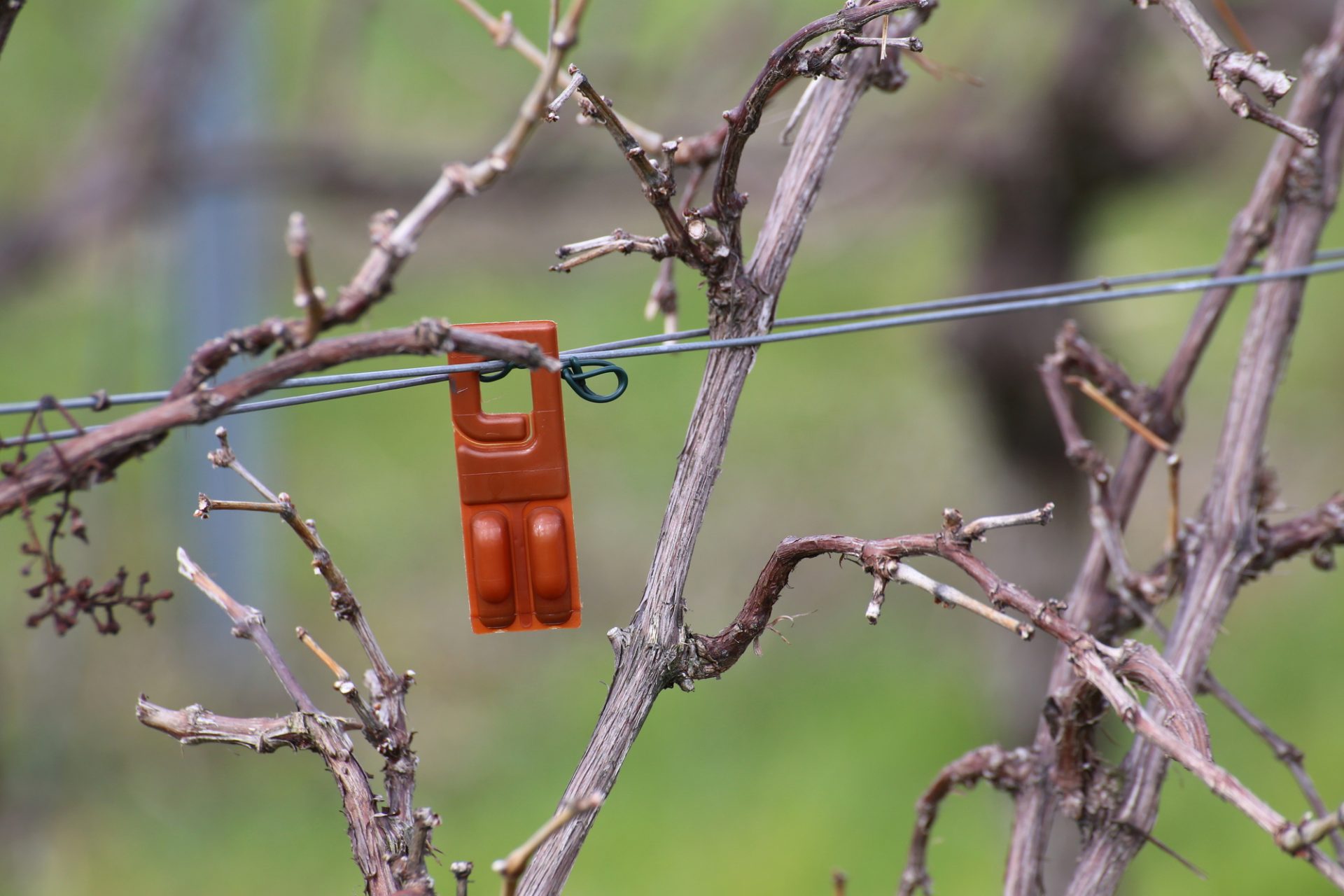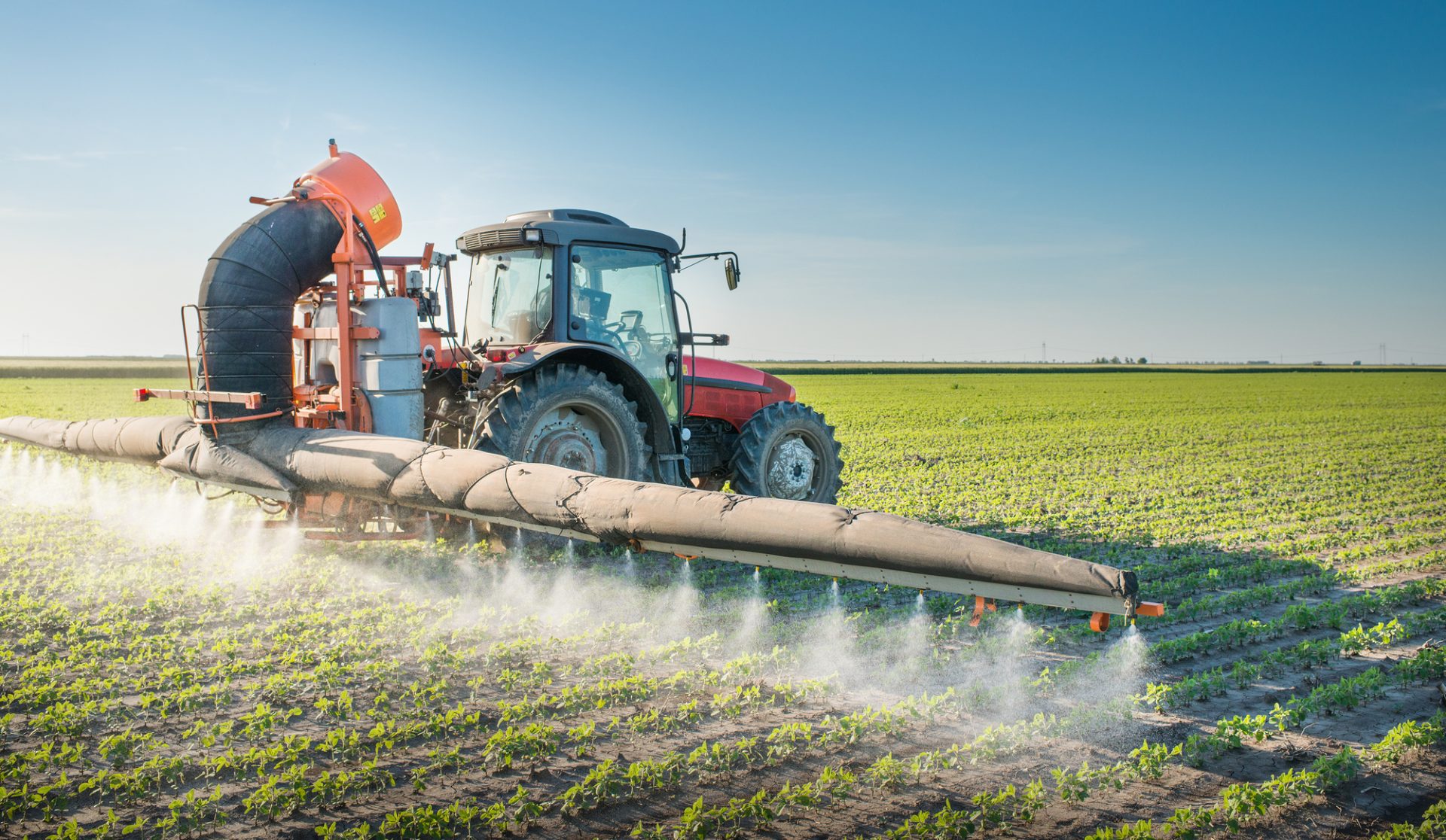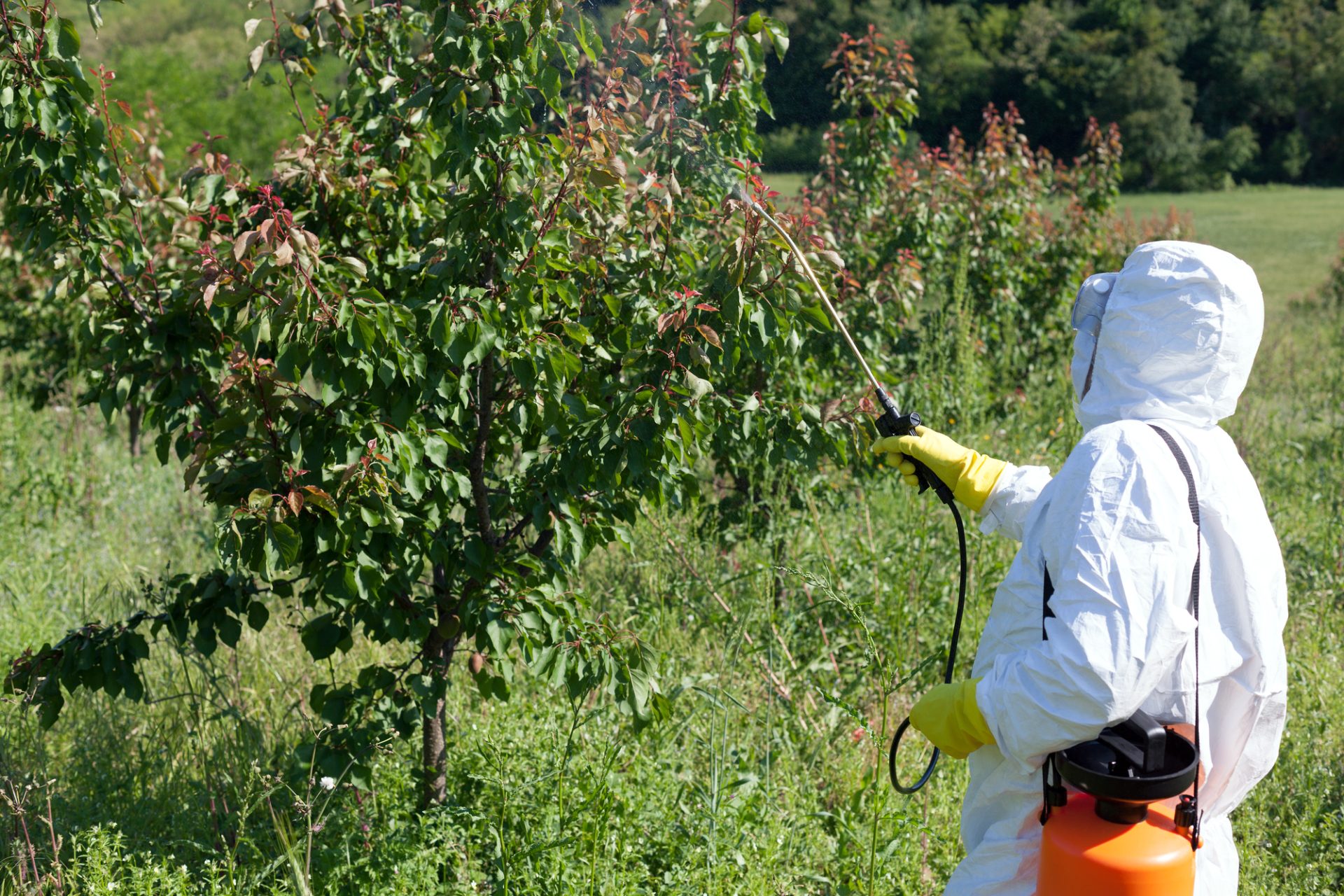If you purchase an independently reviewed item through our site, we earn an affiliate commission. Read our affiliate disclosure.
Pesticides have been in use for nearly centuries, mainly formulated to kill insects and pests that target crops and cause harm. There exists a wide variety of pesticides that are used in agricultural operations. These chemicals might benefit the crops in terms of eliminating the pests and insects but they come with serious effects to the environment and its biodiversity. In this article, we’ll discuss pesticide alternatives that can be used in place of harmful chemicals.
About Pesticides
Harmful pesticides cause serious harm to pollinators such as bees, birds, animals, human beings, and aquatic organisms. This has therefore raised a lot of concern, especially among organizations that are concerned with environmental sustainability and stability. Of concern are the commonly used pesticides that comprise compounds such as herbicides, nematicides, fungicides, molluscicides, insecticides, rodenticides, and many others.
Pesticides are mainly aimed at inducing lethal damage to specific target pests or insects. Nonetheless, this has not been the case, thereby posing a serious risk to the non-target species, which could also include human beings. It is therefore best advised that farmers adopt pesticide alternatives for agricultural operations.
History of Pesticide Use
The history of pesticide usage dates back to about 4,500 years ago, with records showing that the Sumerians adopted the use of sulphur compounds to control mites and insects that targeted their crops. Other historic records show that the Chinese used arsenic and mercury compounds to control lice about 3,200 years ago. Other historic records from Rome and Greece show ancient civilizations used chemical methods to control animal pests, plant diseases, insects, and weeds.
Ancient civilizations derived their chemicals from plants, animals, and easily available minerals. The use of seawater or salt was common as a way of controlling weeds. Some common diseases such as blight and mildew were controlled using smoke from the chaff, fish, straw, ox, hedge clippings, or animal horns. Smoke was also an ideal solution for controlling insects. The use of plant extracts also helped in controlling insects and diseases in crops.
Dried flowers of pyrethrum were also used by ancient civilizations with its early use dating back to 2000 years ago. The pyrethrum powder was used on stored grains, helping keep off harmful insects. Other common chemicals used by early civilizations included copper sulphate and lime which helped control some fungal diseases. Dried round daisies were also used in controlling head lice.
Some substances such as sodium chlorate and sulphuric acid have also been in use as organic solutions to pests. Later on with the onset of civilization, products such as naphthalene, petroleum oils, nitrophenols, creosote, and chlorophenols were developed. These were used for controlling insects and fungal diseases in plants and crops. Others that were developed include sodium arsenate and ammonium sulphate which were used as herbicides.
Synthetic pesticides were more popular in the 1940s, with studies proving the effects of DDT, endrin, BHC, aldrin, parathion, dieldrin, captan, chlordane, and 2,4-D. The substances were an inexpensive and effective solution to pests and weeds. Later studies proved the harm the chemicals had on non-target animals and plants, rendering most of them out of use.
Another chemical that was discovered later on is glyphosate, one of the most effective herbicides discovered in the 1970s and 1980s. Others discovered during the period included sulfonylurea, aryloxyphenoxypropionate, imidazolinone, and dinitroanilines. Spray treatments such as avermectins, Bacillus thuringiensis, and benzoylureas referred to as 3rd generation pyrethroids were introduced during this period. Other families of fungicides that came into the limelight during this period include dicarboxamide, triazole, pyrimidine, morpholine, and imidazole. Most of these chemicals were selective in nature posing the problem of the target developing some resistance to them.
Later studies focused on combating resistance and boosting chemical selectivity. This was done in the 1990s and it was also geared towards minimizing the toxicity and negative environmental impacts of the chemicals. This led to the formulation of agrochemicals that included triketone, fiprole, triazolopyrimidine, isoxazole, chloronicotinyl, strobilurin, spinosyn, azolone, and diacylhydrazine. The main key differentiator of these chemicals was the fact that they could be used in terms of grams and not kilograms per hectare.
There has been a great improvement in chemical formulations over the years, with new pesticides proving to be more efficient in terms of selectivity and resistance management. These chemicals have also been refined to be more user-friendly and safer for the environment.
Presently, pest management strategies are highly developed with the use of genetically engineered crops that can produce their own insecticides. There are also some herbicide-tolerant crop varieties that have made it possible to curb the negative effects of pesticides.
The Usefulness of Pesticides
Pesticides serve a good purpose of eliminating destructive insects and pests. This is its direct benefit to the human population. The fact that it eliminates these pests and parasites makes it useful and will positively impact crop production, leading to higher yields for the farmer. The ultimate effect of this means an increase in income which will make it possible for the farmer and the family to enjoy many other benefits. The latter are secondary benefits derived from the use of pesticides.
The use of pesticides has benefited many stakeholders, encompassing the public health sector, forestry, and agriculture. Crop yields have increased immensely as a result of the use of pesticides across many countries, including the UK, the US, and many others. The use of pesticides has made it possible for farmers to minimize or eliminate weeds, insect pests, crop diseases, and other harmful organisms.
Sustainable crop yields have been achieved over the years as a result of the use of pesticides. Large-scale production of crops such as rice, corn, wheat, and barley has been successful due to the proper management of weeds and crop pests. This has been achieved in one way or another through the use of pesticides. Most of these crops are particularly prone to serious damage from pests during the early stages of crop establishment. It has been possible to achieve sustained yields since pesticides are a viable option in terms of labor and economic efficiency.
Pesticides have been hugely utilized in controlling vector-borne diseases. It makes it possible to eliminate disease-spreading insects such as mosquitoes. Insects that also spread diseases in livestock have been well-managed through the use of pesticides.
Harmful Effects of Pesticides
It is important to consider the negative effects of using pesticides and then weigh their cons and pros before making a judgment on whether it makes sense or not to continue using pesticides. Some of the harmful effects of pesticides include the effect on humans and other life forms. These chemicals have also been found to have a serious impact on the environment.
Top of the list of the effect is death and chronic diseases resulting from pesticide poisoning. This has been established to cause 1 million or more deaths every year globally. The most affected people include production workers, loaders, formulators, farm workers, sprayers, and mixers. Anyone handling these toxic substances is at great risk.
Toxic compounds found in pesticides find their way into the earth, oceans, air, and lakes inflicting serious damage to pollinators, birds, fish, and other living organisms in these environs. Workers that are exposed to pesticides either during production or usage exhibit certain symptoms that include headache, eye and skin irritation, nausea, fatigue, and vomiting.
Soil, vegetation, water and turf contamination result from the use of pesticides. It not only kills the targeted weeds and insects but can also affect directly non-targeted organisms such as birds, beneficial insects, fish, and other un-intended plants. Water on the surface of the earth can be contaminated by pesticides that are washed out of treated plants and soil. This is a widespread problem globally, with various studies yielding baffling results with regard to this. The harmful chemicals affect groundwater as well, with some traces of harmful substances ending up in groundwater that include well and hand pump water. This contaminated water usually takes years to be cleansed thus proving to be a problem to humans.
Soils are contaminated by pesticides such as fungicides, herbicides and others through runoff and leaching. These harmful toxins end up in drinking water. The chemicals also undergo transformations through complex chemical reactions leading to the formation of more toxic elements that harm living organisms including man. The other effect of chemicals that end up in the soil is the death of beneficial microorganisms. The loss of fungi and bacteria leads to soil degradation. This will mean a decline in crop production eventually and desertification of useful agricultural land.
Exposure to Pesticides and Health Effects
There are so many ways through which exposure to harmful pesticides can occur. Frontline workers such as farmers and farm workers become exposed to the chemicals during plant, crop, or grain store treatments. Pesticides can also drift from farms and affect those residing within close proximity to the farm. Domestic, forestry, and professional pest control activities might also lead to exposure to pesticides.
Pesticide exposure can occur in cities with the main culprits being playgrounds, parks, and parks during spraying sessions. Those bought on shelves for home use can also end up in food, putting humans and animals at great risk.
Some of the main signs of exposure to pesticides may include:
- Seizures, weakness, or death.
- Allergic reactions.
- Cough, sore throat, or respiratory tract discomfort.
- Skin and eye irritation.
- Diarrhea, nausea, or vomiting.
- Headache or loss of consciousness.
Long-term exposure to pesticides will lead to some serious diseases and effects that include cancer, Parkinson’s disease, depression, ADHD, anxiety, asthma, and attention deficit.
In summary, below is a summary of the symptoms of mild, moderate and severe poisoning resulting from pesticide poisoning:
| Mild | Moderate | Severe |
|
In addition to mild symptoms:
|
In addition to mild or moderate symptoms:
|
Pesticides find their way into our bodies through three main channels, namely the skin, mouth, and lungs. The chemicals can sip through the skin when mixing, applying, or loading the substances. Those who touch equipment used for administering the chemicals are also at risk of absorbing the chemical residues through their skin.
Vapors, powder, and droplets might end up in the system through inhalation. The main exposure results from the use of high-pressure equipment that generates tiny droplets of pesticides.
Though not so common, pesticide poisoning might occur through ingestion or by mouth. This can occur when pesticides are stored in unlabeled storage equipment such as bottles or beverage cans. The substances can also be ingested accidentally if the hands are not properly cleaned by those handling the chemicals.
It is also important to point out that the toxicity of chemicals varies depending on various factors. These include the following:
- Duration of exposure to the chemical – the longer the exposure period the more the harm caused.
- The type of pesticide – some chemicals are more harmful than others.
- The pesticide concentration or dose – the greater the concentration the more severe the health effects.
- The entry point of the chemical, mouth, skin, nose, etc – entry points affects the ease of the chemicals getting into the system.
- The quantity of chemicals exposed to – the more the amount of chemicals exposed to the greater the effects.
- The chemical composition of the pesticide – some pesticides contain other carriers that have more severe effects when exposed to them.
Pesticide Alternatives

The use of pesticide alternatives in agricultural operations can help minimize overreliance on harmful pesticides. Truth be told, it will not take a year to completely abandon the use of pesticides but slowly and surely this can be achieved over the long haul. Here are some pesticide alternatives that you can consider:
1. Natural Predators
This is perhaps one of the most effective and easy-to-use solutions in the place of pesticides. Almost all creatures in nature have a natural enemy and the same applies to the pests and parasites that target agricultural operations. Some of the most common solutions include frogs, ladybird beetles, and birds.
The ladybird larvae gorge on aphids and this makes one of the best solutions for combating these pests. The larvae will help eliminate aphid infestations within days. The adult ladybird also consumes aphids ferociously even though they cannot be compared to the larvae.
Birds make excellent predators of pests such as caterpillars, grubs, and other insects. Birds can help rid insect pests from fruit trees. There exists a wide variety of insects that target agricultural operations and birds are good at keeping a check on them.
Toads and frogs can be used to combat slugs, snails, and other moving insect pests. You can also use lacewings to target whiteflies, aphids, and blackflies.
The use of natural parasites will also help control pests in agricultural operations. For instance, wasps help control insect infestations. They usually lay their eggs in pests then their larvae eat the pest. This can help control caterpillars, aphids, whiteflies, and scales. Nematodes are also beneficial with regard to controlling grubs, beetles and most insects in their larval stage. The fungal spore Nosema locustae also help control grasshoppers in wheat plantations. Grasshoppers avoid wheat plants that have this spore resulting in death through starvation.
2. Use of Soft Chemicals
Most commonly used insecticides are made up of pyrethroids and or neonicotinoids. These chemicals are harmful to useful insects such as bees. Therefore it is wise to avoid these substances and instead use softer and safer alternatives in gardens.
Plant oils make the best alternative to chemicals in gardens when it comes to eliminating common pests. These include lemongrass, rosemary, thyme, eucalyptus, lavender, and geranium oils. Soaps can also be used in gardens, especially household soaps diluted to less than 2 percent. You can get recommended soap sprays for pest treatment at local garden centers.
3. Companion Planting
This strategy entails the planting of crops next to a variety of crops that repel certain pests. This method is a sustainable and economical option for pesticide usage. The practice also helps enrich the soil with beneficial nutrients.
Some of the popular plants recommended for companion planting include allium species, lavender and petunias. Petunias help keep off squash bugs, aphids, leafhoppers, and tomato hornworms. You can plant lavender alongside other crops to keep off flies, moths, mosquitoes, caterpillars, and fleas. Allium species comprising crops such as shallots, onions, leeks, chives, and garlic will help repel aphids, cabbage worms, slugs, Japanese beetles, and carrot flies. Allium species can be planted alongside crops such as cabbages, carrots, broccoli, tomatoes, and potatoes.
4. Nuclear and Isotopic techniques
Radiation is commonly used for controlling non-native agents. This helps avoid the reintroduction of the species. Radiation also helps to completely sterilize some hosts before being deployed to agricultural fields. This helps to stop these species from procreating and hence no future generation. This method has been successfully applied in the control of Mexican fruit flies. This method has also helped manage fruit flies in the West Indies. The sterilized males help prevent the wild population from reproducing.
5. Cultural Pest Controls
This method helps control diseases and weeds. Examples of these include crop rotation, pruning of crops, border cropping, and change of irrigation. These methods help minimize pest establishment and disrupt their life cycles. They are the ideal and best alternative to pesticides. Farmers have developed sophisticated methods of controlling pests in the place of chemicals. Organic methods are embraced by many in farming operations and have proven to be more beneficial with regard to the quality of food produced. It is also environmentally friendly, unlike the use of harmful chemicals.
6. Physical and Mechanical Controls
These mainly comprise the physical or mechanical techniques that directly kill or suppress the pest, for instance, trapping rodents instead of poisoning them. Mulching is also a physical method that helps keep off weeds in agricultural fields. You might also use steam sterilization as a way of controlling pests. These methods prove to be more sustainable, unlike the use of pesticides.
Conclusion
Numerous studies have been done and are underway to establish the risk/benefit of using pesticides. This huge problem demands more attention since it might not be possible to eradicate the use of pesticides in a year or less. Drastic change is what is required and with more studies and the need to adopt practical alternatives to pesticides then we shall certainly stop using harmful chemicals over the long haul.
Pesticides might prove to be hard to let go of since they are an easier, cheaper, and quicker solution to insect pests and weeds. Nonetheless, its use has an underlying cost that might be too much to bear. For instance, almost every part of the environment is contaminated by pesticides. Residues of these chemicals can be found in air, soil, ground, and surface water. Mainly affected non-target organisms include insects, beneficial soil microorganisms, birds, aquatic creatures, humans and also plants. It is, therefore, necessary that we put together our efforts in combating this serious problem.
We should all play our part by adopting safer and non-chemical solutions in agricultural operations. A more popular response that was developed as a way of countering pest resurgence and pesticide resistance is what is referred to as integrated pest management (IPM). IPM encompasses the methods that have been carefully evaluated and found to inhibit the growth of pest populations. It utilizes a number of pest management strategies that do not encourage the use of chemicals. Such methods include biological, physical, and cultural strategies that minimize the risk posed to human health by the use of pesticides.
 BeeKeepClub Resources and Guides for Beekeepers
BeeKeepClub Resources and Guides for Beekeepers



